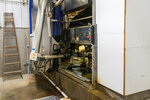150 years doing of doing anything is impressive, 150 years as a family-owned farm is even more so. That is exactly what the Elmegca Farm is doing this year, celebrating their sesquicentennial. This …
This item is available in full to subscribers.
To continue reading, you will need to either log in, using the login form, below, or purchase a new subscription.
If you are a current print subscriber, you can set up a free website account and connect your subscription to it by clicking here.
Otherwise, click here to view your options for subscribing.
Please log in to continue |




150 years doing of doing anything is impressive, 150 years as a family-owned farm is even more so. That is exactly what the Elmegca Farm is doing this year, celebrating their sesquicentennial. This feat is only possible because the farm is under its fifth generation of ownership by the Schaffer family just south of Miesville on Nicolai Ave.
In 1852, Henry Schaffer immigrated from Germany to the United States to escape religious persecution. When he and his young family arrived in New Orleans, they travelled up the Mississippi River and settled in Minnesota. In 1873 his son, Henry, and his wife Ernestine homesteaded a small farm in Dakota County which is now several hundred acres.
“Back in the late 1800’s, everyone had a couple pigs, a couple chickens, a couple cows, a couple horses and they all just did their own thing,” explained Jeff Schaffer, co-owner of Elmegca Farm. “The funny thing that I found interesting is, most people came over from the East Coast and moved west, our family came in from Louisiana and moved north.”
That move north fit the Schaffer’s just fine and in 1881, Henry’s son George P. was born on the farm, in the house that is still in use on the property currently even though it has seen many expansions and upgrades throughout the years. George P’s son, Eugene, was born in the same house, and he witnessed the home go from horse powered machinery to modern technology.
Eugene started the dairy herd milking the 30 original cows by hand in the original stanchion barn. As the herd grew, he added a free stall barn in 1968 along with 80 more cows that led to an additional building going up in 1971.
Eugene and his wife Loretta were a great team with Loretta keeping the milkhouse clean and organized and driving the tractor as needed, especially during hay season. They both were key leaders for the Douglas 4-H Club, leading it for over 50 years. All five of their children actively participated in 4-H showing dairy cows and even had one cow named reserved grand champion at the Minnesota State Fair.
Technology was important to Eugene and in 1975, he built the county’s first manure slurry which won him several awards. That slurry is still in use today.
“Our manure slurry is what holds all of our cow poop from the dairy cows. When he built it, it was big enough to hold enough manure for 12 months. But that was back in the early 70’s when he was only milking 80 cows. Now we still use the same manure pit, but it only holds two months’ worth of storage. He was the first one in the Upper Midwest to put a slurry in,” explained Jeff.
The advantage of the slurry is that they have on demand, natural fertilizer. When a field needs to be fertilized, they pump out what they need from the slurry. This helps keep costs down because they are not constantly needing to buy fertilizers. They still purchase herbicides for the fields and needed antibiotics for the herd, but the slurry saves them time and money.
In 1984, Al and his brother George purchased the farm and increased the acreage, and they became the fourth generation of Schaffer’s to own and operate the farm. Now, Jeff and Justin Schaffer are working to complete the purchase of the farm they have been running the last few years to become the fifth generation of Schaffer’s to own the original property.
Together, Jeff and Justin had to make an important decision. Discontinue the milk production or make a dramatic leap of faith. The main buildings on the property had finally reached the end of their lifespan regarding the full milking process and they needed to be repurposed for something else and completely replaced if milking were to continue on the farm. In 2021, the brothers made the leap of faith, and they built a new state of the art building for milking.
The new building holds 220 cows and is almost completely automated. Again, being a technological leader in the county, they installed three robotic milking stations. Three stations for 220 cows sounds a bit absurd at first, until you see how it works.
The robotic milking station is mesmerizing on its own, but once you hear the technology that goes on behind the scenes, you will agree it is very cool, but it makes so much sense when you think about it.
Cows are just like any other animal and even humans. They have their own personalities and their own unique needs. One cow may only need to sleep for four hours before it is roaming around again, and it may sleep another four hours later in the day. There are a million other combinations of things that each cow could do in their own unique way, which reinforces the fact that each cow is different. The old milking style of start at 5:00 a.m. and milk, then comeback at 5:00 p.m. to milk again is being proven to be the less effective way to do it.
Some cows produce enough milk to be milked five times a day, others only once or twice. Another factor is each of the four teats on the cow produce different quantities of milk each time they are milked. The old machines had four cups to milk with, but they were all running off of one pump until the farmer stopped the process. With the robotic system, each quadrant is analyzed and monitored independently via flow sensors and they each have their own pump. Once the flow drops, the quadrant is disconnected so that teat is never completely drained. This is much healthier for the cow. The machines are so accurate, they can tell just how much milk to expect not only from each cow total, but from each quadrant. The machines keep track of the cow’s history, when it was last milked, how much each session produced and more importantly, if the cow is authorized to milk yet.
Authorized to milk yet? The system is set up to be run almost completely free from human interaction so that the farmers can focus on other things. They still have to be part of the day-to-day milking, but they don’t need to sit there and monitor it 24/7. The system keeps track of how frequently each cow enters the milking process. During this visit, of the 220 cows the Schaffer’s have, 107 of them were not authorized to be milked.
Why is this an issue? Cows are like dogs; they can be trained to do certain things. The cows were trained to get milked as needed and one of the incentives is receiving treats when they enter the milking stall. Like dogs, sometimes they just want the treats even if it is not their turn yet. When this happens, the system notices the cow is early and it pushes them out of the stall. Not literally, but it shuts down the treat portion and then nudges them along. If that does not work, the cow behind them helps push and ultimately, a farmer might have to step in and give a nudge.
The system tracks productivity and over time it knows which cow needs to milk five times a day versus the cows that only need to be milked twice. It even alerts the farmer when a cow is late for milking so that he or she can go help get the cow in the stall. The system has the flexibility to let cows’ milk at 2:00 a.m. if needed.
“Normally, each of these machines is idle for around five hours a day,” said Justin.
“My grandfather, he saw two horses in front of the plow to 200 horses under the hood of a tractor in his lifetime. He said that we as his grandkids will not see the technology change that he did. We're going to see it more on the software technology change. I don't think he ever dreamed we'd be milking cows with robots,” said Jeff.
Elmegca Farm has received recognition from both the Farm Bureau and Dakota County. It has been on the same property since the original homestead in 1873 and with all of their accomplishments and successes, the biggest question they get is around the name.
“Back when my grandfather Eugene, who was the third-generation owner took over the farm, he needed to come up with a farm name for the bookkeeping purposes. He couldn't think of a name and Shaffer Farms is already used by another family. So, my grandma, who was a doodler, sat down one day and just started jotting things down. What she came up with was the first letter out of everyone in the family in order of age except for three. So, the E stands for Eugene. The L stands for Loretta. The M is for Mary. E is for Elaine, G is for George, C is for Carol and A is for Allen. That is my grandfather, my grandmother and then all five of their children,” added Jeff.
Elmegca Farm has seen a lot in the last 150 years and the hope is that they will see even more in the next 150 years. By then, it will be double digit generations of owners and if any family can do it, it seems the Schaffer’s are ones that could. Congratulations on 150 years and here is to many, many more.